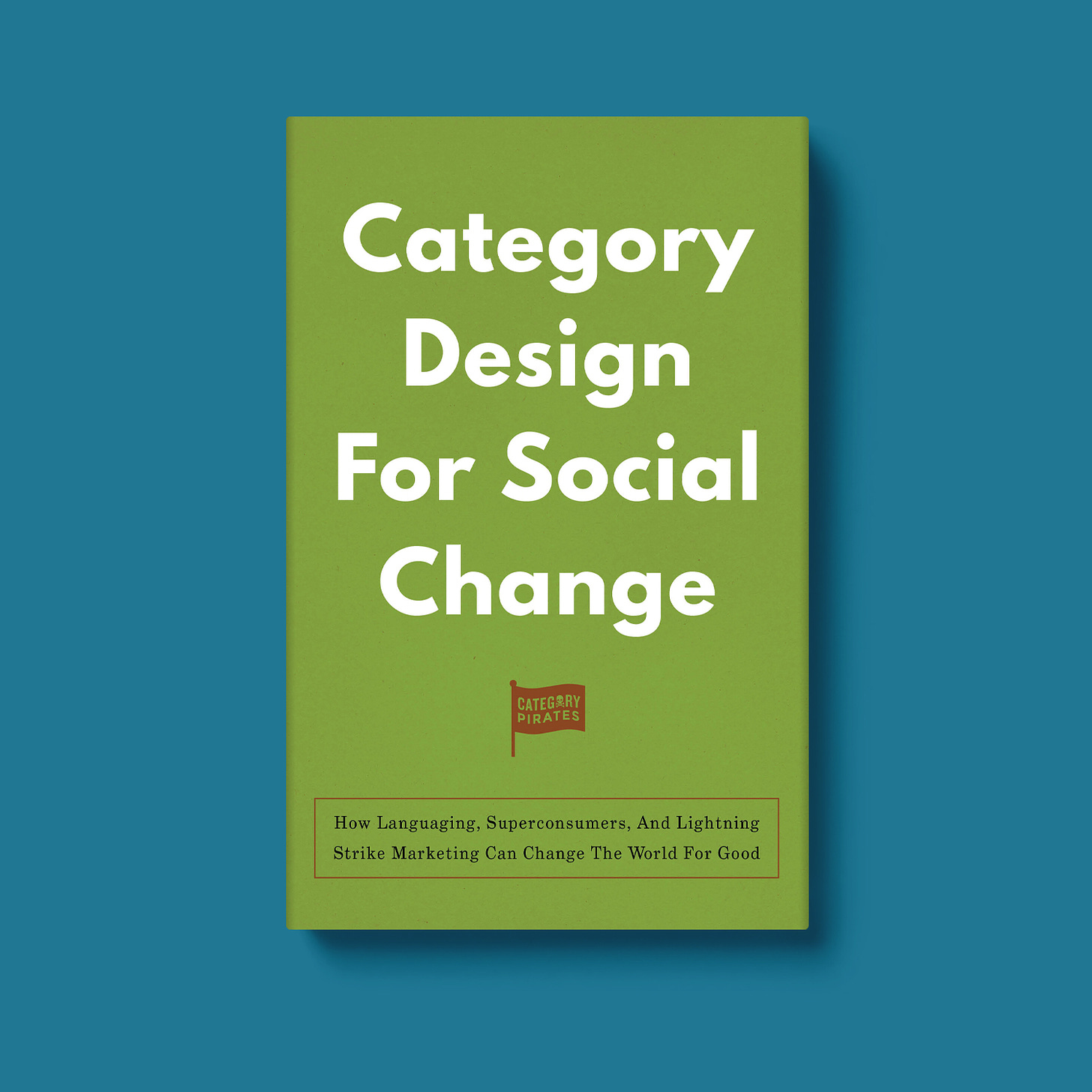Category Design For Social Change: How Languaging, Superconsumers, And Lightning Strike Marketing Can Change The World For Good
Everything is the way it is because someone changed the way it was.
Dear Friend, Subscriber, and Category Pirate,
In the early 1900s, women and men were not paid the same amount of money for the same amount of labor. (Well, actually, it’s still not really equal, but back then there was an even bigger wage gap.)
Because it was the law.
Pay Law in the early 1900s was created through a very specific Category Design and Point of View, and the POV went like this: “Men have to provide for a family, so they need more money. Women, on the other hand, are only in the workforce for a short period of time, and are the ones who bear children. Once they have children, they will no longer be responsible for providing for the family because they won’t be able to work anymore (they’ll be too busy taking care of the children). Which means the man will be the one responsible for putting food on the table. Ergo, men should make more money than women.”
That was the law.
But everything is the way it is because someone changed the way it was.
In 1962, Pirate Christopher’s mother Jackie worked her first summer job at a factory in Canada. She was paid 65 cents per hour. Meanwhile, the 16-year-old boy next to her on the assembly line was paid $1.00 per hour. By law.
That is, until 1972 (in Canada) and 1963 (in the United States), when a new POV emerged.
Equal Pay For Equal Work.
5 small, strategically placed words didn’t just change the way people thought about work, or the way people thought about the role women played in society.
THEY CHANGED THE LAWS for Canada, then the United States, and then most of the western world.
Category Design For Social Change
In our mini-book, The Big Category Lie, one of the great “lies” about Category Design is that it’s too expensive.
But is that really an excuse not to move the world in a way that matters?
It’s much easier to understand the gravity of this idea when you imagine a bunch of people saying, “You know, educating the masses on the importance of Equal Pay For Equal Work just seems like a lot of effort. It’s going to be expensive, and exhausting, and probably a little chaotic fighting for women to have the same rights as men.” And then just giving up.
Whether you are willing a new sector into existence or trying to change laws of government to spearhead social change (or sometimes both, as Uber did, inventing a new market category called “ride-sharing” and then requiring government to amend legacy legislation as a result), Category Design is the art of changing people’s minds. In some cases, it’s as small as changing someone’s mind from wanting to eat sushi or a burrito and instead considering a Sushirrito. In others, it’s changing someone’s mind from driving a gas-guzzling SUV to an electric one. And in the most extreme cases, it’s changing someone’s mind from thinking “rights” are something only white men should have—and eventually considering, and then supporting the idea that “rights” should also encompass “women’s rights” and “black rights” “gay rights” and “human rights.”
This is how you use Category Design for social change.
Keep reading with a 7-day free trial
Subscribe to Category Pirates to keep reading this post and get 7 days of free access to the full post archives.





